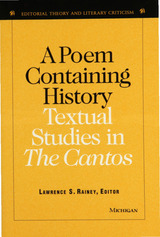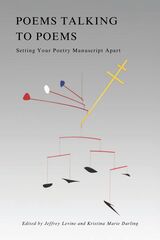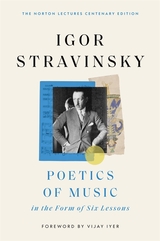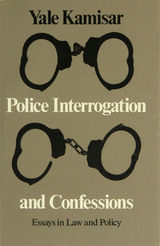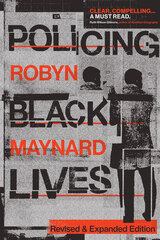4 books about Blanchard, Jim

A Diminished Roar
Winnipeg in the 1920s
Jim Blanchard
University of Manitoba Press, 2019
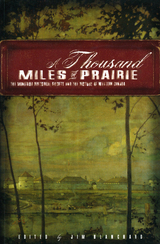
A Thousand Miles of Prairie
The Manitoba Historical Society and the History of Western Canada
Jim Blanchard
University of Manitoba Press, 2002
A Thousand Miles of Prairie is a fascinating look at Manitoba's early boom years (1880-1910) through the eyes and words of some of the most interesting personalities of early Winnipeg. This collection brings together 14 pieces from the first decades of the Manitoba Historical Society, when its lectures were attended by the provinceís political and cultural elite. Jim Blanchard has chosen selections that give us a vivid taste of the diversity of intellectual life in turn of the century Manitoba. Besides writings by early historians such as George Bryce and Charles Bell, he includes a paper by the young Ernest Thompson Seton, who writes about his attempts to raise prairie chickens. There is also a description of the last passenger pigeons found in Manitoba. The collection includes lively personal reminscences, such as Gilbert McMicken, Canada's first spymaster, talking about foiling a Fenian raid on Winnipeg, and Archbishop Samuel Matheson, who tells about his boyhood adventures in the great Red River floods of the 1860s.
[more]
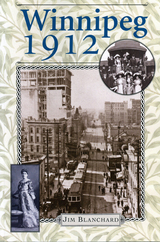
Winnipeg 1912
Jim Blanchard
University of Manitoba Press, 2005
At the beginning of the last century, no city on the continent was growing faster or was more aggressive than Winnipeg. No year in the city’s history epitomized this energy more that 1912, when Winnipeg was on the crest of a period of unprecedented prosperity. In just forty years, it had grown from a village on the banks of the Red River to become the third largest city in Canada. In the previous decade alone, its population had tripled to nearly 170,000 and it now dominated the economy and society of western Canada. As Canada’s most cosmopolitan and ethnically diverse centre, with most of its population under the age of forty, it was also the country’s liveliest city, full of bustle and optimism. In Winnipeg 1912 Jim Blanchard guides readers on a tour through this golden year when, as the Chicago Tribune proclaimed, “all roads lead to Winnipeg.” Beginning early New Year’s Day, as the city’s high society rang in 1912 at the Royal Alexandra Hotel, he visits the public and private side of the “Chicago of the North.” He looks into the opulent mansions of the city’s new elite and into its political backrooms, as well as into the crowded homes of Winnipeg’s immigrant North End. From the excited crowds at the summer Exhibition to the turbulent floor of the Grain Exchange, Blanchard gives us a vivid picture of daily life in this fast-paced city of new millionaires and newly arrived immigrants. Richly illustrated with more than seventy period photographs, Winnipeg 1912 captures a time and place that left a lasting impression on Canadian history and culture.
[more]
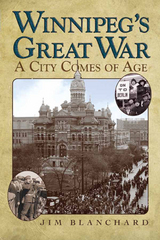
Winnipeg's Great War
A City Comes of Age
Jim Blanchard
University of Manitoba Press, 2010
From the local bestselling author of Winnipeg 1912 comes the riveting next chapter in the city’s history. Winnipeg’s Great War picks up in 1914, just as the city is regrouping after a brief economic downturn. War comes unexpectedly, thoughts of recovery are abandoned, and the city digs in for a hard-fought four years.Using letters, diaries, and newspaper reports, Jim Blanchard brings us into the homes and public offices of Winnipeg and its citizens to illustrate the profound effect the war had on every aspect of the city, from its politics and economy, to its men on the battlefield, and its war-weary families fighting on the home front. We witness the emergence of the city’s social welfare services through the work of women’s volunteer organizations; the political scandals that led to the fall of the Rodmond Roblin government; and the clash between independent jitneys and the city’s private transit company. And we hear the conflicted emotions that echoed in the city’s streets, from anti-foreign sentiment and labour unrest, to patriotic parades, and a spontaneous Victory Day celebration that refused to end.Through these stories, Blanchard reveals how these crucial years set the stage for the decades ahead, and how the First World War transformed Winnipeg into the city it is today.
[more]
READERS
Browse our collection.
PUBLISHERS
See BiblioVault's publisher services.
STUDENT SERVICES
Files for college accessibility offices.
UChicago Accessibility Resources
home | accessibility | search | about | contact us
BiblioVault ® 2001 - 2025
The University of Chicago Press


